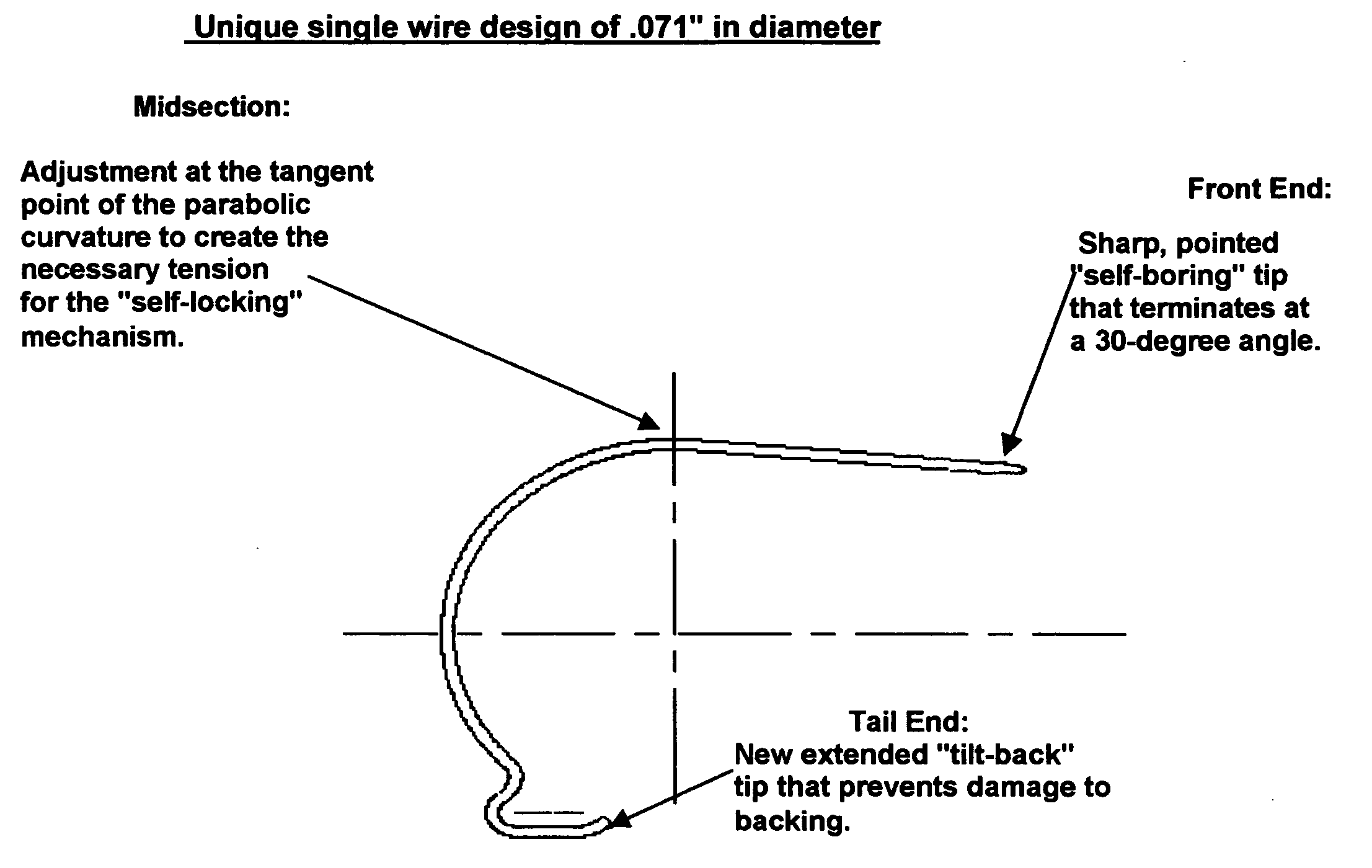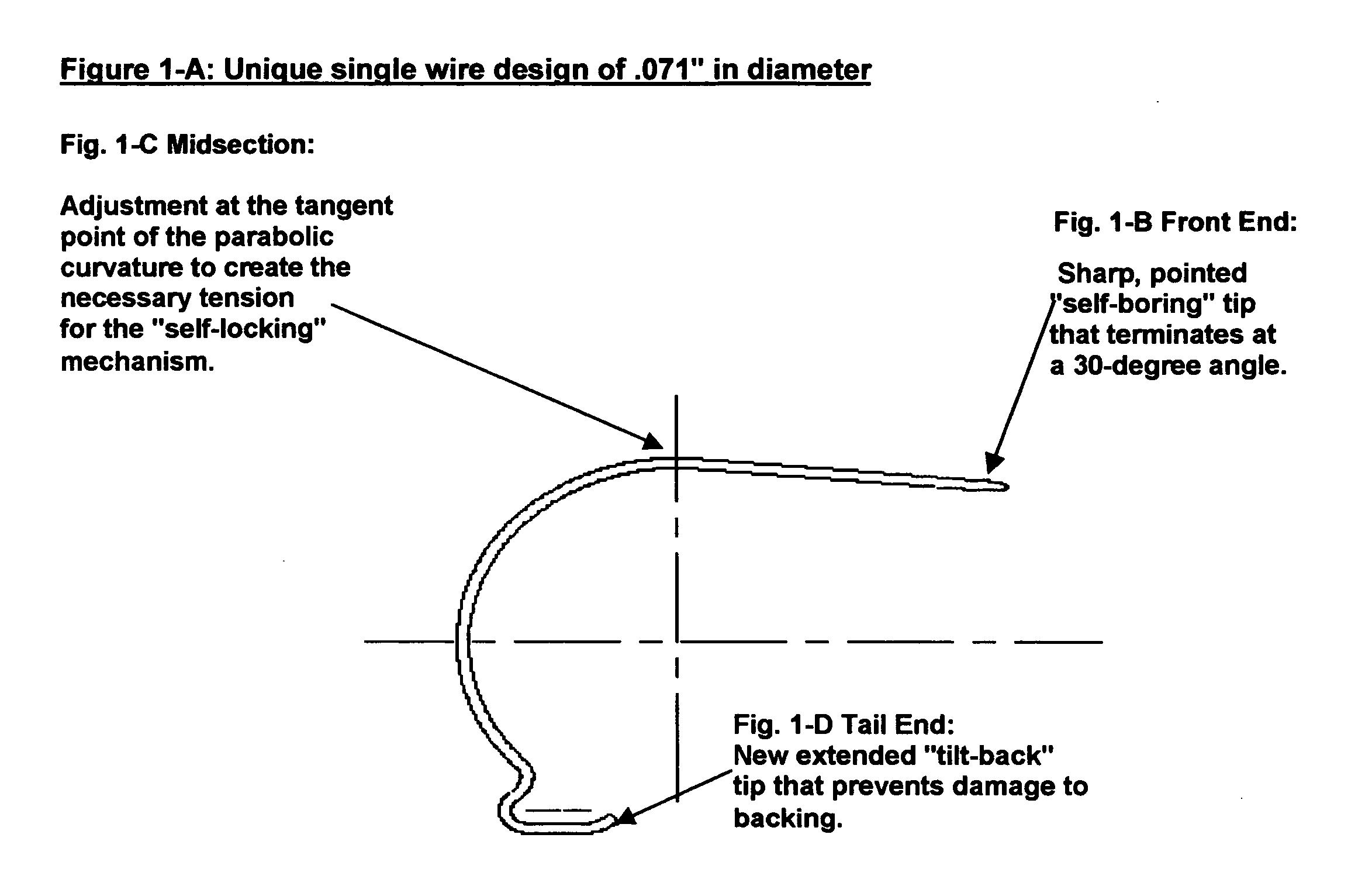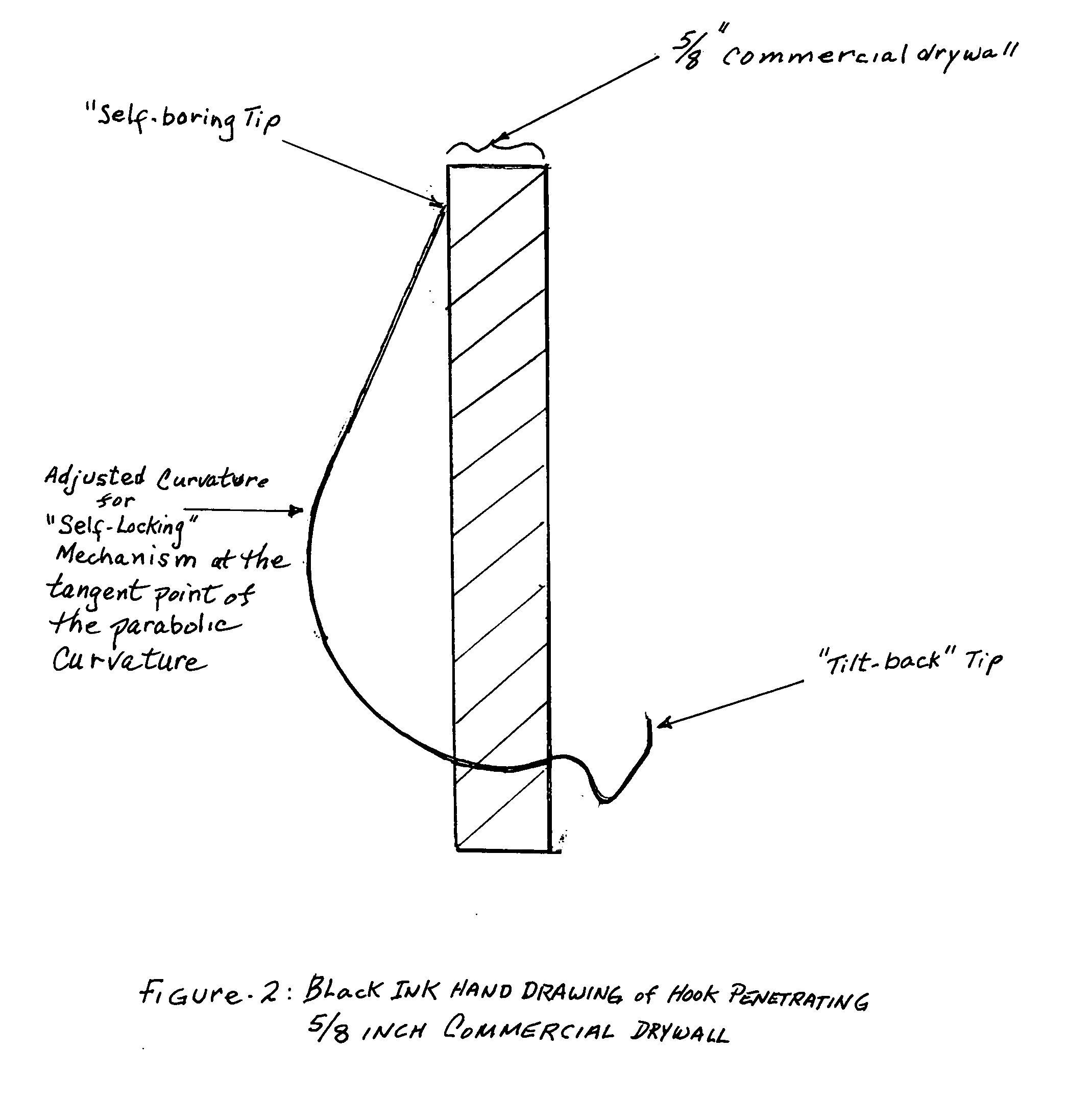Monkey hook, a singl, "self-locking" metal picture hook
a metal picture and hook technology, applied in the direction of washstands, curtain suspension devices, applications, etc., can solve the problems of hanging objects that cannot be hung on the wall, hangers may slip or rotate, hangers may fail, etc., to prevent damage to the backing of pictures or objects that need to be hung, eliminate excess wall damage, and no excessively large holes
- Summary
- Abstract
- Description
- Claims
- Application Information
AI Technical Summary
Benefits of technology
Problems solved by technology
Method used
Image
Examples
Embodiment Construction
[0024] As illustrated in FIG. 1-A described above, The Monkey Hook™ is a single-wire universal design made of lightweight, Spring Steel whereby one end terminates in a sharp point and penetrates commercial or standard drywall (˜⅝″ thick). This product is a simple, unique design using steel wire 0.071 inch thick.
[0025] The front tip of The Monkey Hook™ is shown in FIG. 1-B and when installing, it is pointed orthogonal to the drywall. With a back and forth twisting motion of the wrist, the “self-boring” tip penetrates through standard or commercial drywall. The hook slides easily into the drywall, while turning it to lock it in a straight, vertical upright position that points to the ceiling. This end of the hook remains invisible once the product is installed.
[0026] The midsection of this single-wire design as shown in FIG. 1-C has a parabolic curvature and this curvature has been adjusted at the tangent point of the parabola by a certain number of degrees from the Hogg patent to p...
PUM
 Login to View More
Login to View More Abstract
Description
Claims
Application Information
 Login to View More
Login to View More - R&D
- Intellectual Property
- Life Sciences
- Materials
- Tech Scout
- Unparalleled Data Quality
- Higher Quality Content
- 60% Fewer Hallucinations
Browse by: Latest US Patents, China's latest patents, Technical Efficacy Thesaurus, Application Domain, Technology Topic, Popular Technical Reports.
© 2025 PatSnap. All rights reserved.Legal|Privacy policy|Modern Slavery Act Transparency Statement|Sitemap|About US| Contact US: help@patsnap.com



